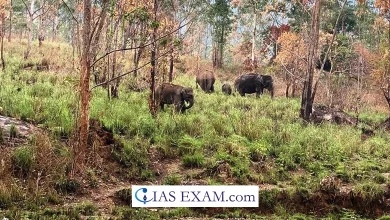
Context-Recently, the Ministry of Environment, Forests and Climate Change (MoEFCC) decided against merging many significant environmental groups, raising questions about its motives and potential outcomes.
About the article:-
The Ministry of Environment, Forests and Climate Change (MoEFCC) quietly abandoned plans to merge the offices of the Forest Survey of India (FSI), the National Tiger Conservation Authority (NTCA), the Wildlife Crime Control Bureau (WCCB), and the Central Zoo Authority (CZA), and bring them under the Ministry in a notification that was quietly released in June.
- Forest Survey of India(FSI)
The Forest Survey of India (FSI), a government organisation under the Ministry of Environment, Forest, and Climate Change of India, was established in June 1981 and has its headquarters in Dehradun, Uttarakhand.
- National Tiger Conservation Authority (NTCA)
The National Tiger Conservation Authority (NTCA) is a statutory department of the Ministry that carries out the duties outlined in the Wildlife (Protection) Act, 1972, with a broad supervisory and coordination responsibility.
- Wildlife Crime Control Bureau (WCCB)
The Government of India formed the Wildlife Crime Control Bureau (WCCB) as a statutory organisation under the Ministry of Environment, Forest, and Climate Change to tackle organised wildlife crime.
- Central Zoo Authority (CZA)
The Indian government’s entity in charge of zoo oversight is called the Central Zoo Authority. It belongs to the World Association of Zoos and Aquariums as an affiliate member.
What was the proposal in the ministry plan?
- Activists expressed concern that the announcement of such a reorganisation would make important environmental organisations “toothless” during the Covid-19 lockdown once it was revealed.For instance, under the current system, the NTCA has the right to object to the clearing of a forest for a project that will divert land from the Tiger Reserve.
- Due to the NTCA falling under the Deputy Director General of Forests, who is in charge of the integrated Regional Office and reports to the Ministry, the proposed merger would have made it difficult.
What was the rationale behind the ministry’s decision?
- Giridhar Kulkarni, a wildlife conservationist from Belgaum, had filed a case against this reorganisation plan in the Karnataka High Court in 2020, saying that it would amount to an illegal combination of companies and agencies.
- The NTCA monitors Project Tiger and India’s tiger reserves.The FSI is a scientific organisation that mostly deals with forest statistics.The WCCB is an enforcement agency.And the CZA’s jurisdiction is limited to zoo operations.
- It could have been easier to promote communication and cooperative environmental conservation actions if they shared a common structure and administrative framework.
- Bringing these organisations under the supervision of a single Ministry could result in a more cohesive approach to handling various areas of environmental protection, wildlife conservation, and forest management.
What exactly does the new notification say?
The Indian government introduced a plan last month to merge Project Tiger and Project Elephant, which sparked outrage for a variety of reasons. At the moment, Project Elephant has no legal backing.The Wildlife Protection Act of 1972 recognizes tiger reserves but not elephant reserves.
Project Tiger & Project Elephant Merger:-
Conservation will be strengthened by budget rationalisation and amalgamation.
- Project Tiger:-
Project Tiger was launched by the PM Indira Gandhi on April 1,1973 from Jim Corbett National Park, uttrakhand.It is under Indian Wildlife (protection) act,1972.
- Project Elephant:-
Project Elephant was launched by the Government of India in the year 1992. To protect Elephants, their habitat & corridors,to address issues of man-animal conflict.
How has the ministry changed?
Regional ministry offices have recently extended their responsibility in environmental permits and project compliance, necessitating greater financing and infrastructure. However, it is unclear whether this critical assistance was supplied.
Conclusion:-
The NTCA is in charge of India’s Tiger Reserves as well as Project Tiger. The FSI is a scientific body that focuses on forest statistics, whereas the WCCB is an enforcement authority. The CZAR’s responsibilities revolve around zoo operations.
Accessibility and law enforcement rely on decentralised infrastructure. An internal review system is also essential to achieve objective regulatory outcomes that protect the environment while promoting social justice.





.png)



